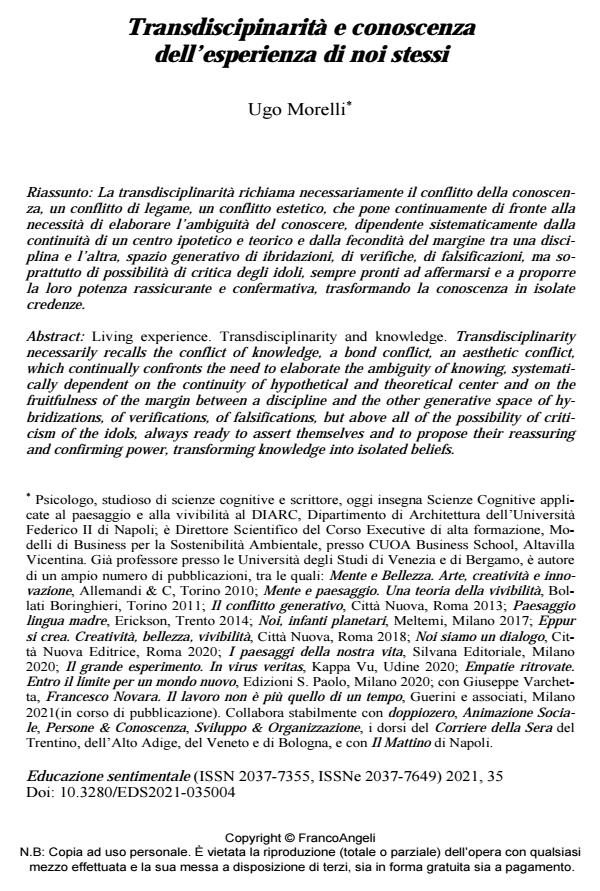Living experience. Transdisciplinarity and knowledge
Journal title EDUCAZIONE SENTIMENTALE
Author/s Ugo Morelli
Publishing Year 2021 Issue 2021/35
Language Italian Pages 19 P. 53-71 File size 269 KB
DOI 10.3280/EDS2021-035004
DOI is like a bar code for intellectual property: to have more infomation
click here
Below, you can see the article first page
If you want to buy this article in PDF format, you can do it, following the instructions to buy download credits

FrancoAngeli is member of Publishers International Linking Association, Inc (PILA), a not-for-profit association which run the CrossRef service enabling links to and from online scholarly content.
Transdisciplinarity necessarily recalls the conflict of knowledge, a bond conflict, an aesthetic conflict, which continually confronts the need to elaborate the ambiguity of knowing, systematically dependent on the continuity of hypothetical and theoretical center and on the fruitfulness of the margin between a discipline and the other generative space of hybridizations, of verifications, of falsifications, but above all of the possibility of criticism of the idols, always ready to assert themselves and to propose their reassuring and confirming power, transforming knowledge into isolated beliefs.
Keywords: immanence, inside/around, body, motor brain, hybridization of codes, action/perception.
Ugo Morelli, Transdiscipinarità e conoscenza dell’esperienza di noi stessi in "EDUCAZIONE SENTIMENTALE" 35/2021, pp 53-71, DOI: 10.3280/EDS2021-035004